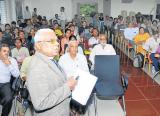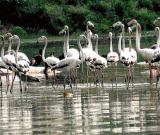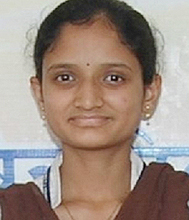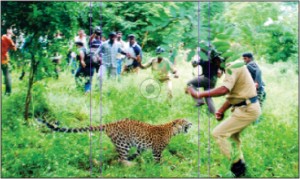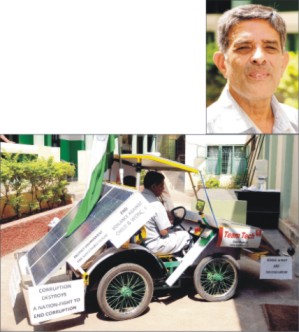
Tourists and local people alike from Mysore and surrounding regions are thronging the famed Shivanasamudra Falls, about 70 km from here, following copious discharge from the Krishnaraja Sagar and Kabini reservoirs.
Shivanasamudra refers to the twin falls of Gaganachukki in Malavalli taluk of Mandya district and Bharachukki in Kollegal taluk of Chamarajanagar district which are separated by a few km. Shivanasamudra is located about 145 km away from Bangalore.

With the combined discharge from the KRS and the Kabini reservoirs in excess of 1,00,000 cusecs, the sight of water gushing down the gorge and plunging into the depths below with a roaring sound is a feast for the eyes. Mist engulfs the entire place when the water is in full flow, lending an ethereal beauty to the falls.
The rate of outflow from the KRS was at about 60,000 cusecs while it was at about 40,000 cusecs from the Kabini reservoir in H.D. Kote taluk. The discharge has remained more or less constant since the last 24 hours due to good inflow into the reservoir and hence Shivanasamudra has come alive in full glory.
Inflow
On Saturday, inflow into the KRS, as measured at 6 a.m., was at 50,049 cusecsand inflow into the Kabini reservoir was at 31,298 cusecs.
Both the Cauvery and the Kabini (also called the Kapila) meet at the Triveni Sangama in T. Narsipur taluk of Mysore district and beyond this point of confluence, the river is referred to as the Cauvery and hence Shivanasamudra is also called as the Cauvery Falls.
Ranked 45
Incidentally, Shivanasamudra has been ranked 45 among the world’s top 100 waterfalls by the World Waterfall Database (www.worldwaterfalldatabase.com). The website goes on to state that it would easily be among the world’s top 10 waterfalls but for the fact that the river has been harnessed. The fact that the river splits into two to form two falls could also be a factor in reduced visual appeal and grandeur compared with other great falls of the world. But none of this matters when the river is in spate as at present.
The visitors’ flow to the falls began as the monsoon picked up momentum. The number of tourists visiting the falls increased in the last couple of weeks following continuous discharge from the Kabini reservoir. With the KRS having attained its full reservoir level of 124.8 feet (but the level was maintained at 123.25 feet on Saturday for safety purpose) and excess water being released from the dam, the volume of water at the falls will be high.
source: http://www.thehindu.com / The Hindu / Home> News> Nation> Karnataka / by R. Krishna Kumar / Mysore – July 28th, 2013
